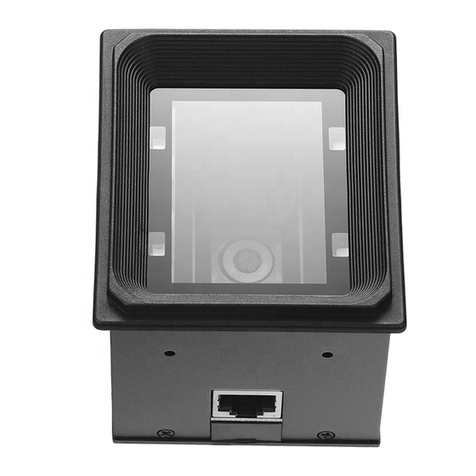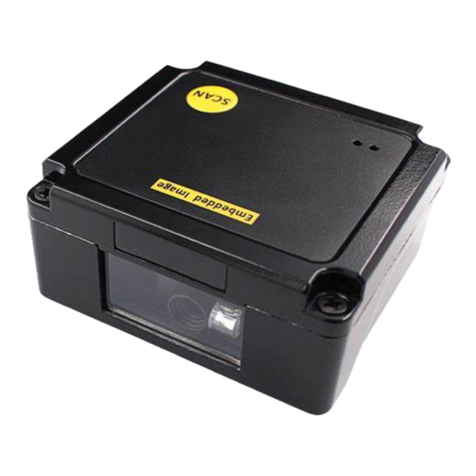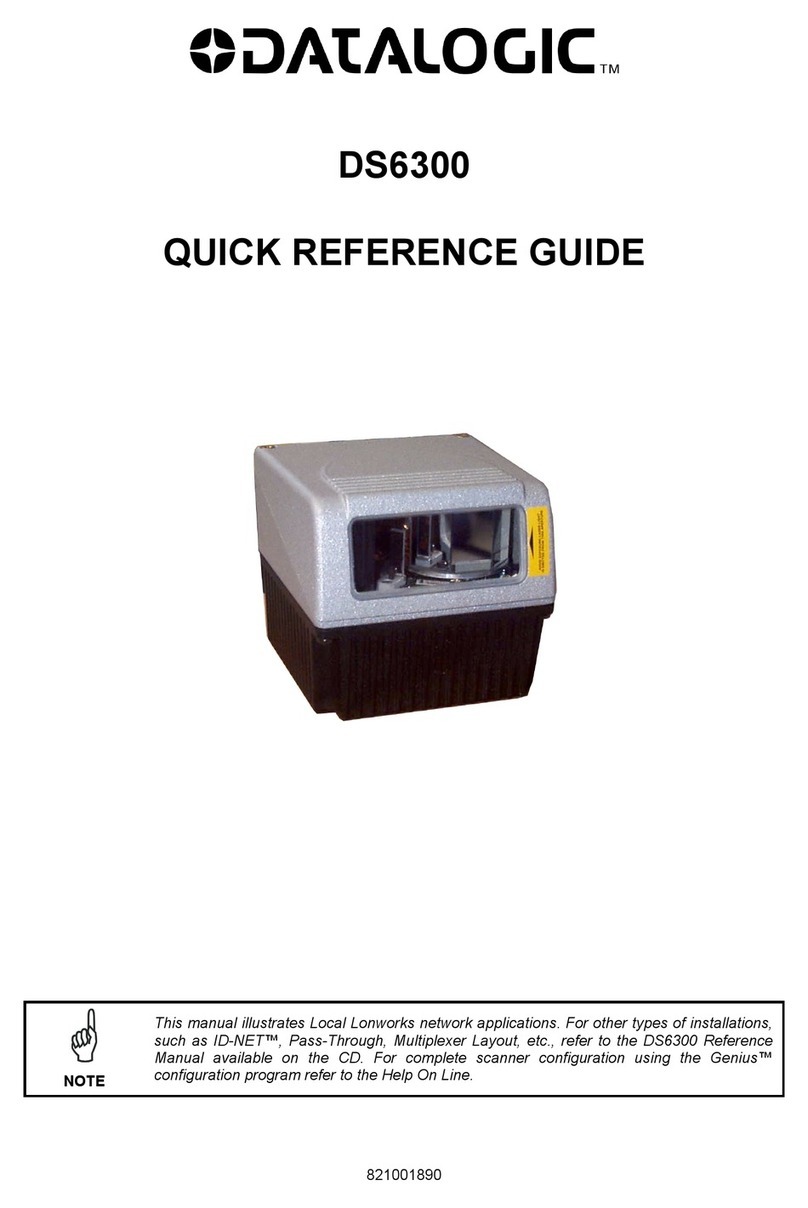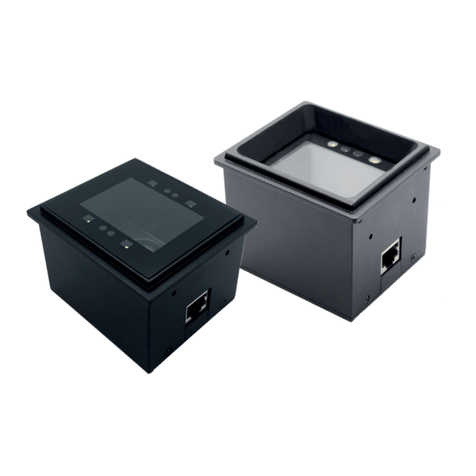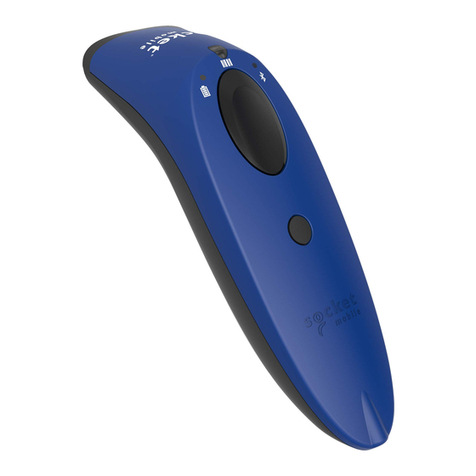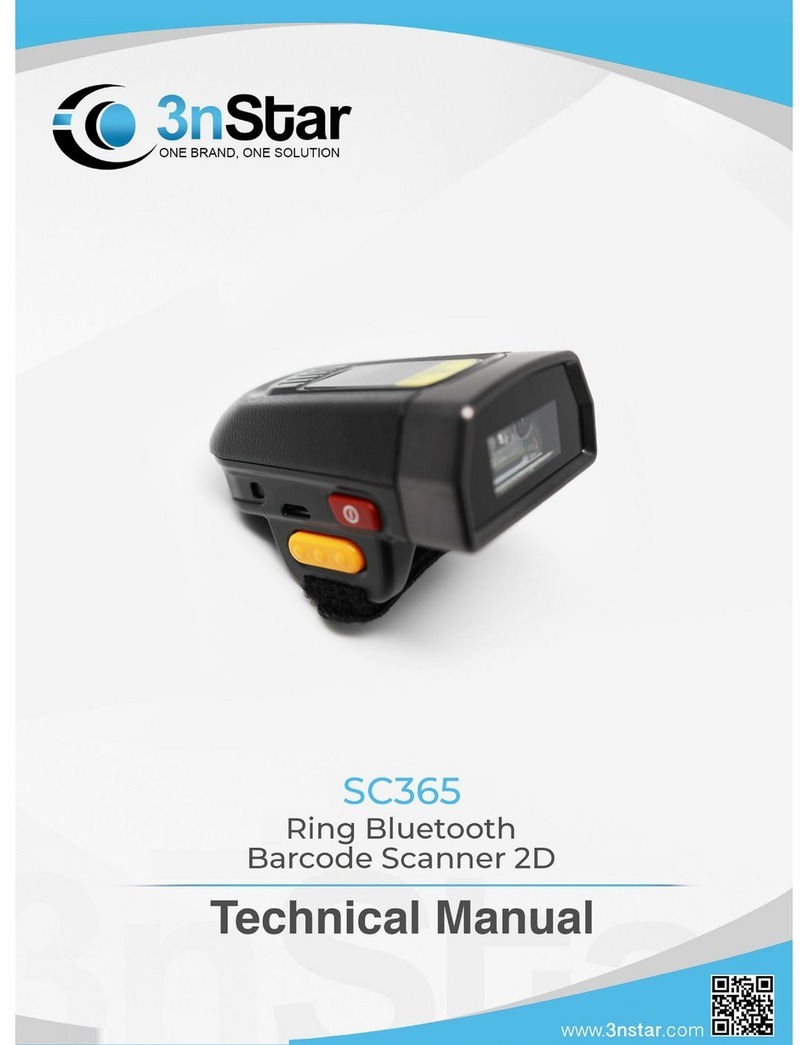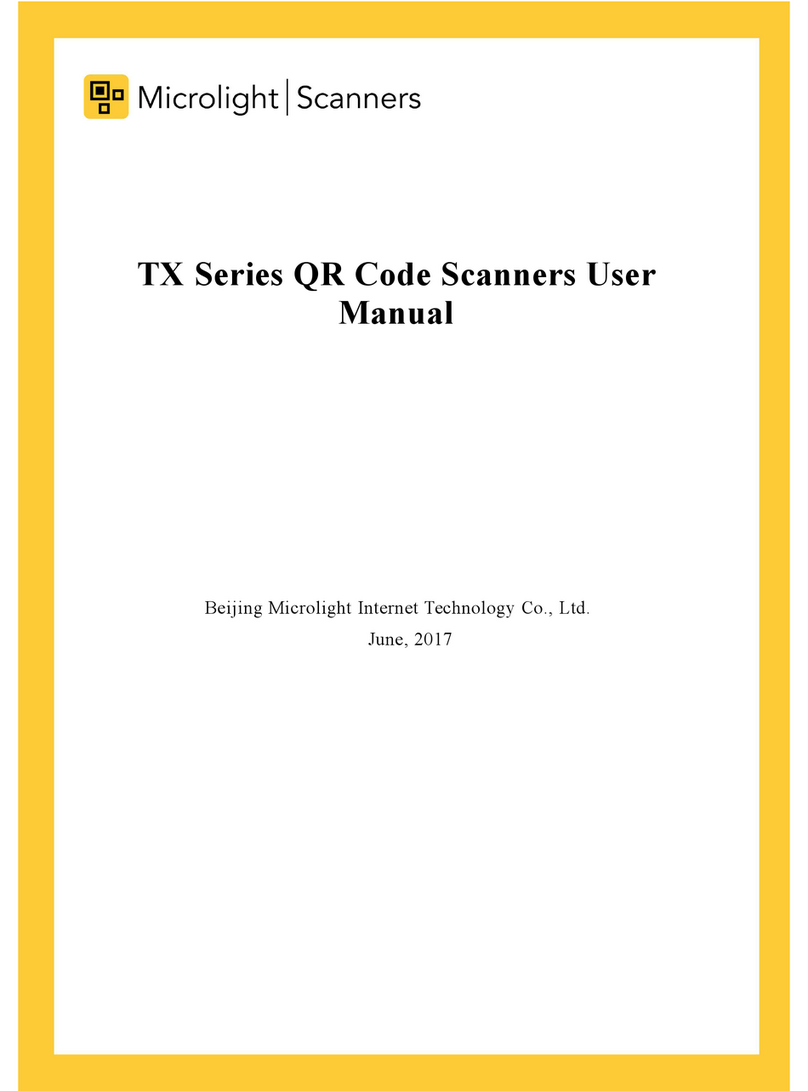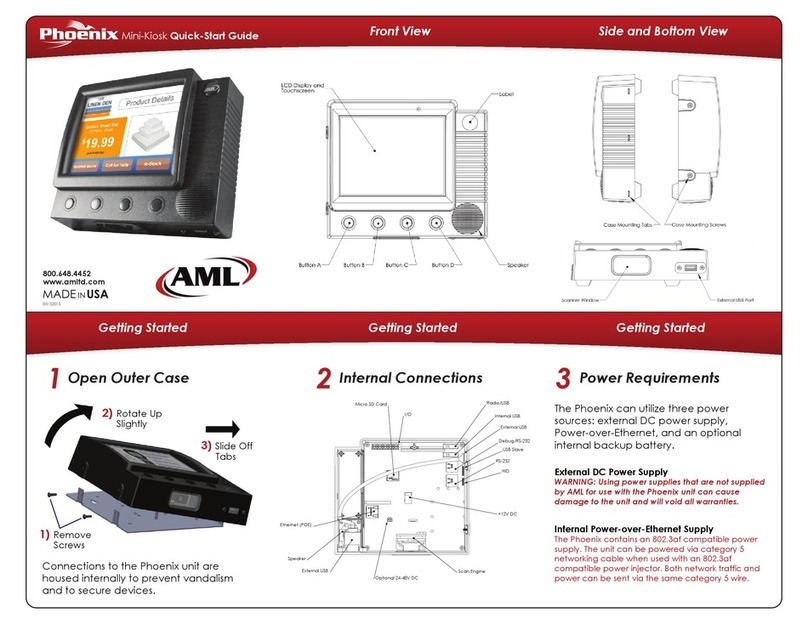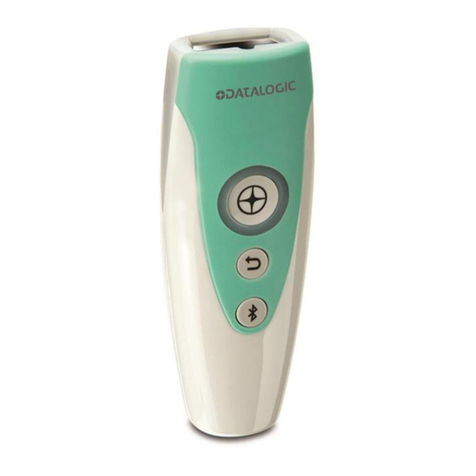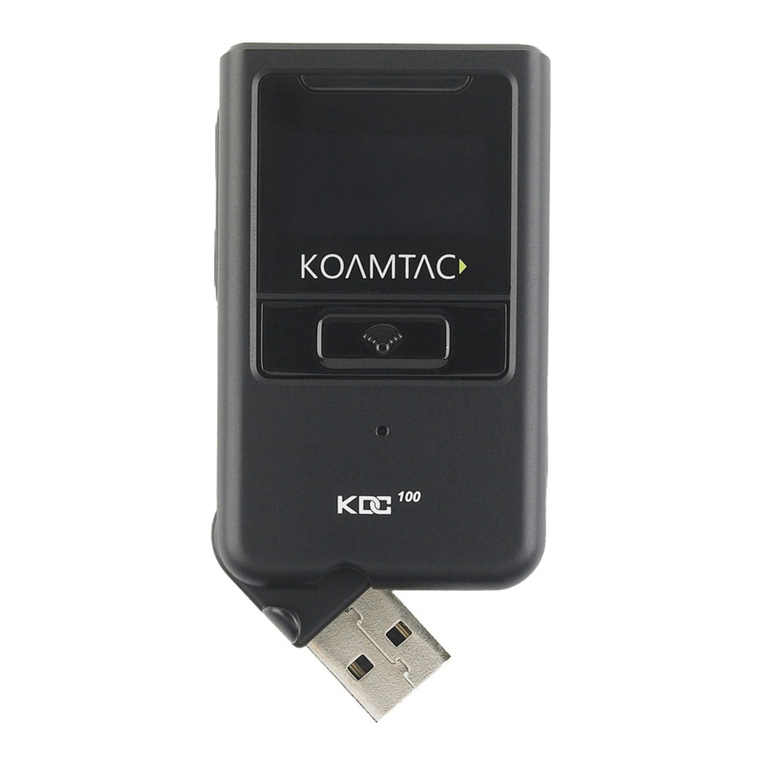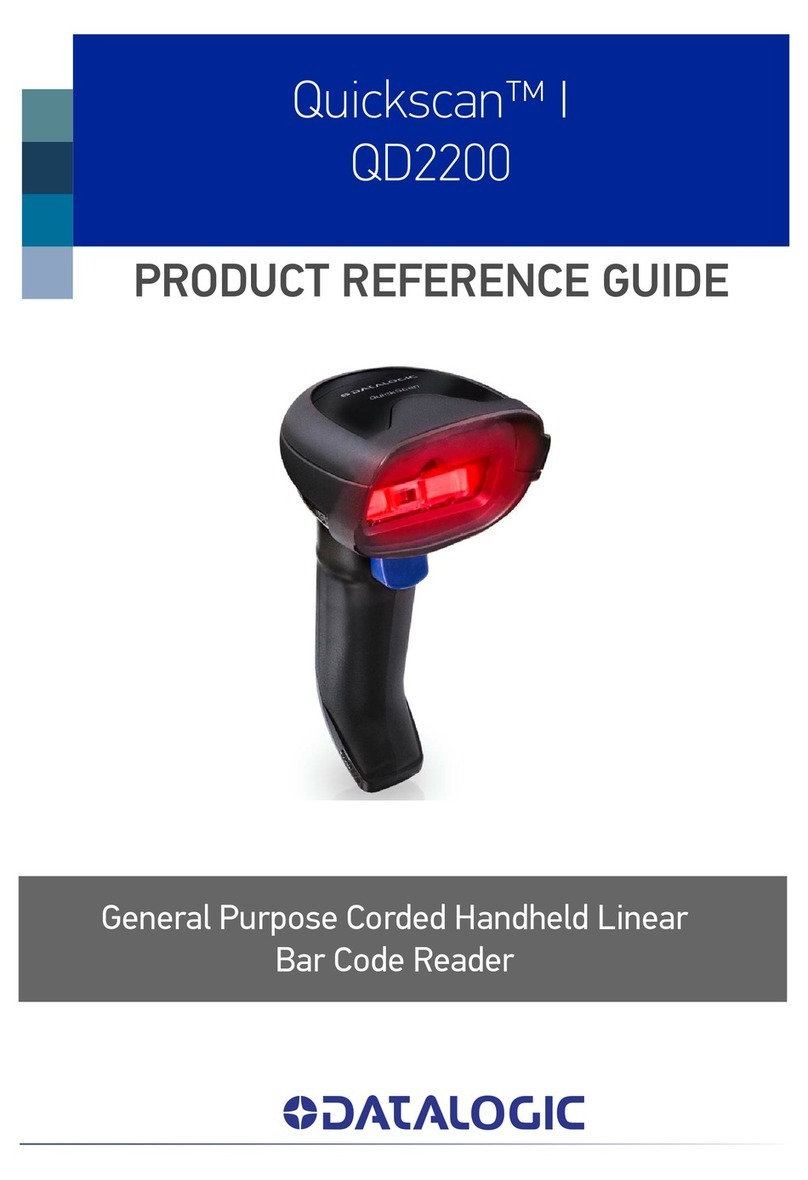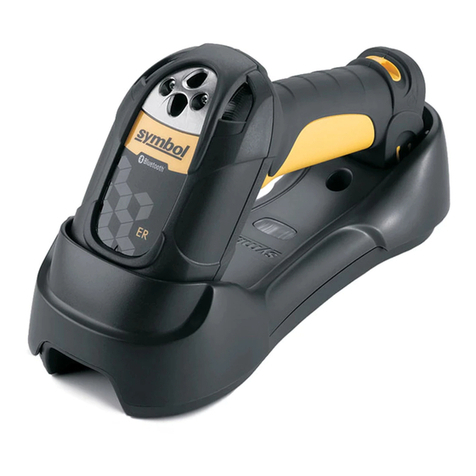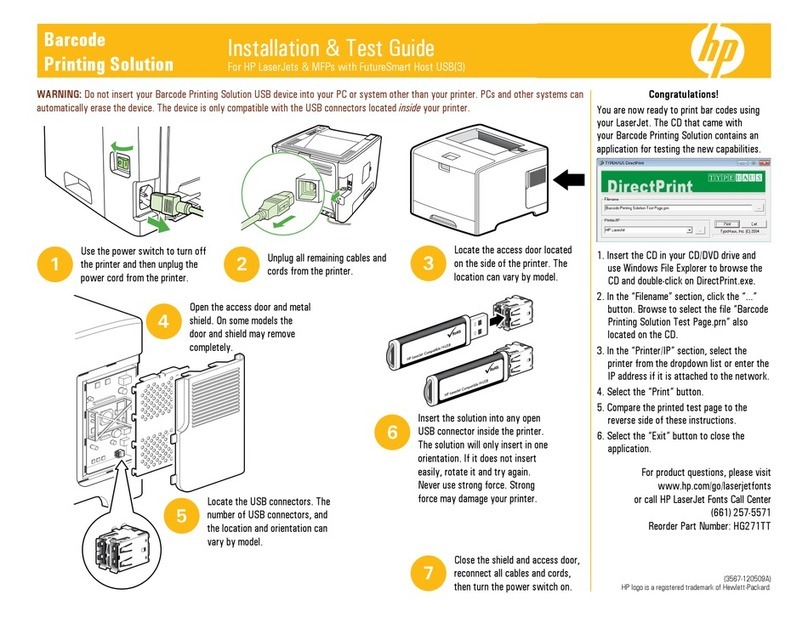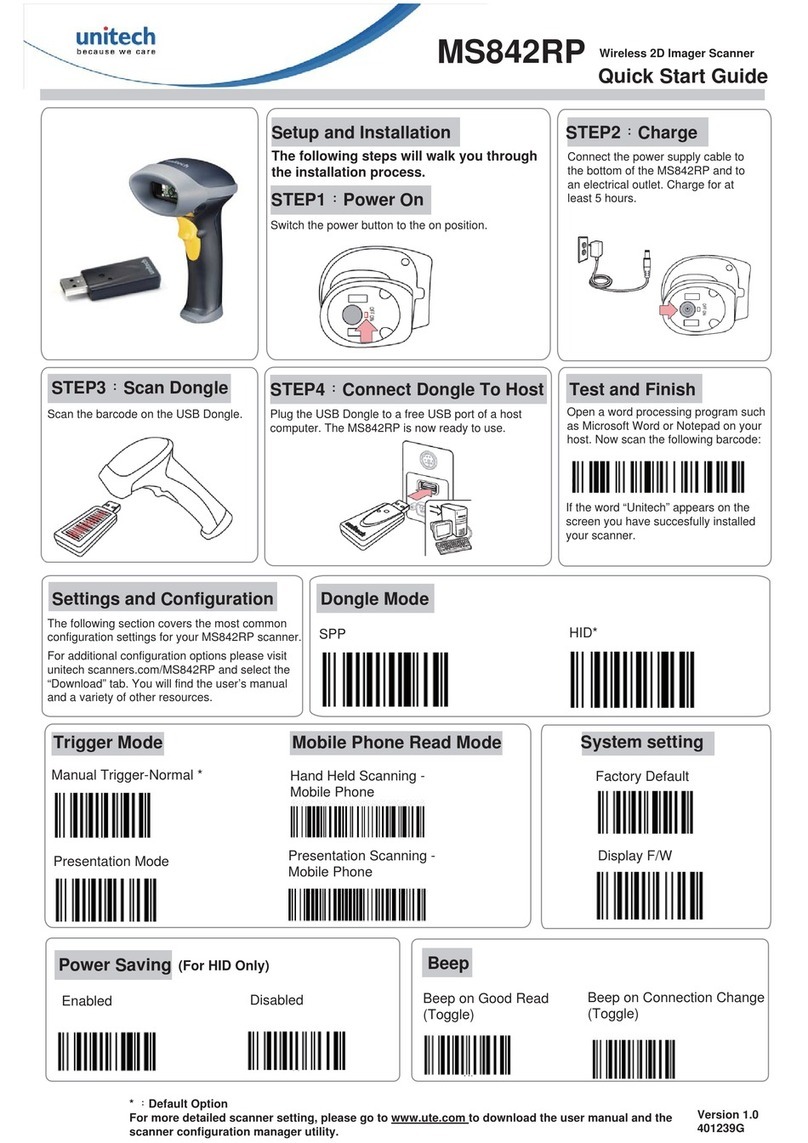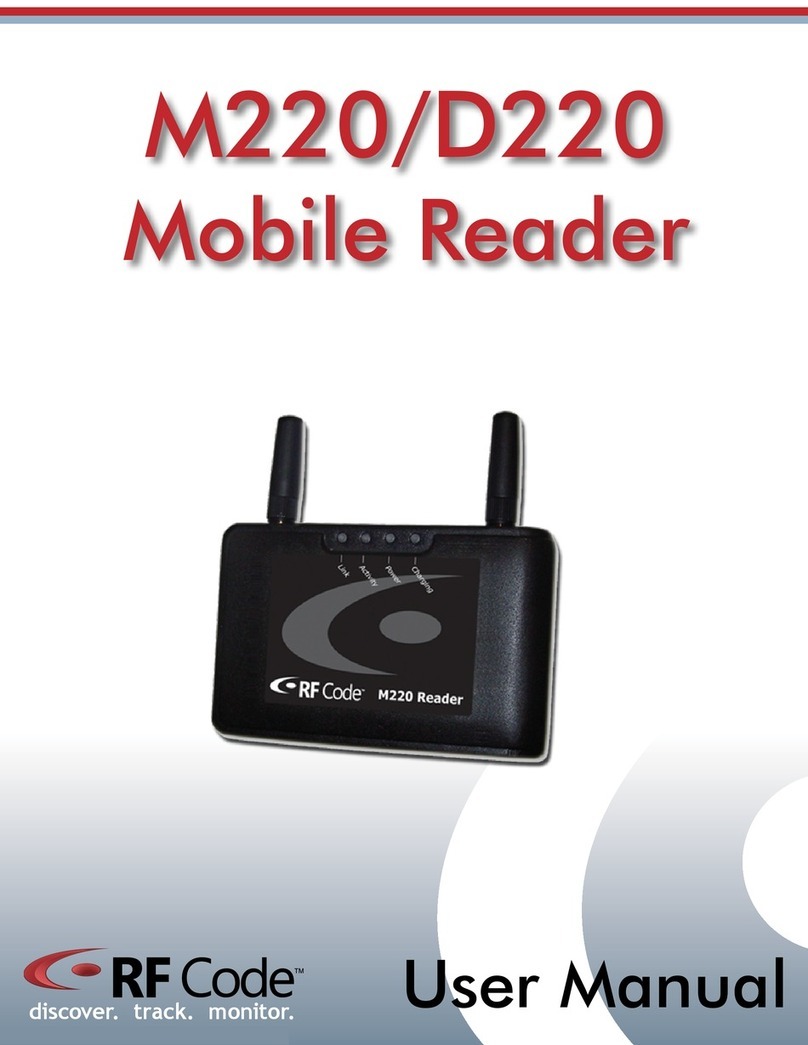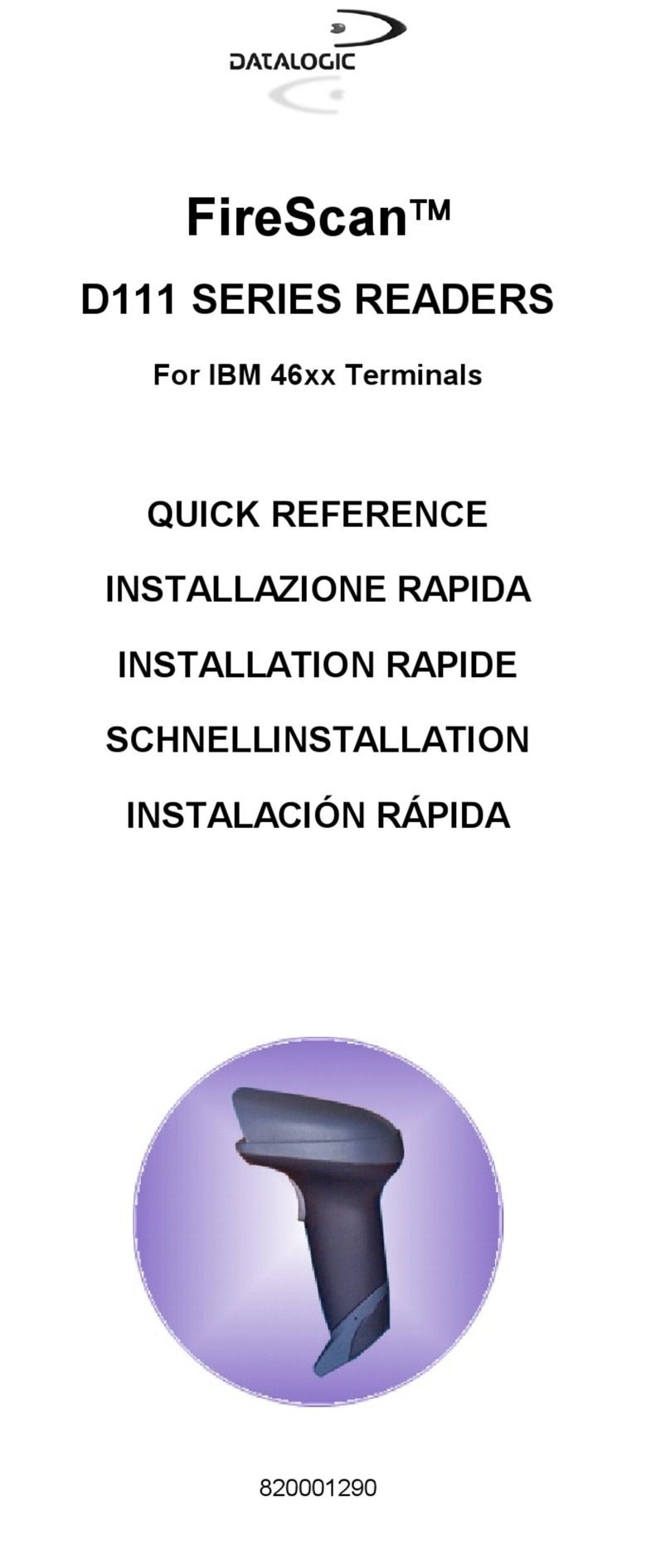YOKO EP3000 User manual

第 1 页 共 45 页
This User Guide Applies to EP3000, EP5000
User Guide

About This User Guide
Pls read all the content of the user guide carefully to use the products safely and effectively.
You are advised of keeping it properly for your using reference.
Disclaimer
Please do not dismantle the product or tear up the seal on it, otherwise we won’t provide
warranty or replacement service.
The pictures in this user guide are for reference only. If there are any pictures which not
match the actual product, please take actual products as the standard. Updated information
is subject to change without notice.
All information contained in this guide are protected by copyright, and our company
reserves all rights. All or part of this guide is prohibited to excerpt, copy, bundle other
products, or sell without the written permission from us.
Version Record
Version number
Version description
Version date
V 1.0.0
Initial version
2016-8-10
V 1.1.1
Optimize decoding performance
2016-11-18
V 1.1.4
Optimize menu
2017-3-5
V 1.1.8
Improve overall performance
2017-5-17
V2.12
Add function and complete the
command control
2017-11-20

Catalogue
1、Product Introduction ...............................................................................................................................1
1.1 Main feature...................................................................................................................................1
1.2 Unpack your device ......................................................................................................................1
1.3 Product display ............................................................................................................................. 1
1.3.1 External view ........................................................................................................................1
1.3.2 dimension(mm)................................................................................................................2
1.4 Communication port.....................................................................................................................3
1.5 Start-up, shutdown, standby and restart ................................................................................... 5
1.6 Maintenance .................................................................................................................................. 5
1.7 Reading skills................................................................................................................................ 5
2、Barcode Menu ........................................................................................................................................ 6
2.1 Mark Setting....................................................................................................................................6
2.2 Setting barcodes.............................................................................................................................6
2.2.1 Turn on/Turn off configuration code......................................................................................6
2.2.3 Read product batch version ................................................................................................. 6
2.2.4 Read user defaults ............................................................................................................... 7
2.2.5 working mode .......................................................................................................................7
2.2.6 WIEGAND interface setting——Wiegand fromat................................................................. 7
2.2.7 Baud rate setting .................................................................................................................. 8
2.2.8 Serial port data bits, stop bits, check bit setting...................................................................8
2.2.9 Character escape ...............................................................................................................10
2.10 Code ID................................................................................................................................ 10
2.11 AIM ID setting........................................................................................................................11
2.2.12 Prefix Setting .....................................................................................................................11
2.2.13 Suffix Setting......................................................................................................................11
2.2.14 Chinese output mode ....................................................................................................... 12
2.2.15 invoice (For China) ...........................................................................................................12
2.2.16 invoice type (for China)..................................................................................................... 12
2.2.17 inverse code option .......................................................................................................... 12
2.3 virtual keyboard.............................................................................................................................13
operation system choice under virtual keyboard.........................................................................13
2.4 Beeper and LED notifications .......................................................................................................14
2.4.1 Beeper Volume setting .......................................................................................................14
2.4.2 startup beep........................................................................................................................14
2.4.3 good read beep...................................................................................................................14
2.4.4 Beep pitch-good read .........................................................................................................14
2.4.5 beep duration-good read ....................................................................................................15
2.4.6 error sound .........................................................................................................................15
2.4.7 good-read LED ................................................................................................................... 15
2.4.8 LED control ......................................................................................................................... 15

2.5 Timeout between decodes............................................................................................................16
2.5.1 Timeout between decodes (Same barcodes)............................................................................16
2.5.2 Timeout between decodes (Different barcodes)........................................................................16
2.6 USB keyboard setting ................................................................................................................... 17
2.6.1 USB keyboard update speed setting.................................................................................. 17
2.6.2 OA & LF setting(USB keyboard)....................................................................................17
2.6.3 USB keyboard text-transform .............................................................................................18
2.7 Keyboard layout setting ................................................................................................................18
2.8 Symbologies..................................................................................................................................20
2.8.1 enable/disable all symbologies........................................................................................... 21
2.8.2 Codabar ..............................................................................................................................21
2.8.3 Codabar start/ending character setting .............................................................................. 21
2.8.4 Codabar limitation of length................................................................................................21
2.8.5 Code 39 .............................................................................................................................. 21
2.8.6 Code 39 check bit...............................................................................................................22
2.8.7 Code 39 Full ASCII ............................................................................................................. 22
2.8.8 Code 39 limitation of length................................................................................................ 22
2.8.9 Code 32 (Code 39 needs to be enabled)..................................................................... 22
2.8.10 Interleaved 2 of 5 (ITF5).............................................................................................22
2.8.11 Interleaved 2 of 5 (ITF5)check bit ...............................................................................23
2.8.12 Interleaved 2 of 5 (ITF5)length setting........................................................................23
2.8.13 Industrial 2 of 5 Limitation of length..................................................................................24
2.8.14 Industrial 2 of 5(4-24 digits).........................................................................................24
2.8.15 Industrial 2 of 5 Limitation of length..................................................................................24
2.8.16 Matrix 2 of 5(4-24)....................................................................................................... 25
2.8.17 Matrix 2 of 5 Limitation of length ...................................................................................... 25
2.8.18 Code 93 ............................................................................................................................ 25
2.8.19 Code 93 Limitation of length............................................................................................. 25
2.8.20 Code 128 ..........................................................................................................................25
2.8.21 Code 128 Limitation of length........................................................................................... 25
2.8.22 ISBT-128...........................................................................................................................26
2.8.23 GS1-128 ........................................................................................................................... 26
2.8.24 UPC-A............................................................................................................................... 26
2.8.25 UPC-A check bit ...............................................................................................................26
2.8.26 UPC-A to EAN-13 .............................................................................................................26
2.8.27 UPC-E............................................................................................................................... 27
2.8.28 UPC-E check bit ...............................................................................................................27

2.8.29 UPC-E to UPC-A..............................................................................................................27
2.8.30 EAN/JAN-8.......................................................................................................................27
2.8.31 EAN/JAN-13 .....................................................................................................................27
2.8.32 UPC/EAN/JAN extra-code................................................................................................28
2.8.33 EAN13 to ISBN................................................................................................................. 28
2.8.34 EAN13 to ISSN................................................................................................................. 28
2.8.35 GS1 DataBar(RSS14)..................................................................................................28
2.8.36 GS1 DataBar Limited........................................................................................................ 29
2.8.37 GS1 DataBar Expanded...................................................................................................29
2.8.38 PDF417.............................................................................................................................29
2.8.39 QR Code........................................................................................................................... 29
2.8.40 Micro QR...........................................................................................................................29
2.8.41 Data Matrix ....................................................................................................................... 29
2.8.42 Aztec Code .......................................................................................................................30
Appendix 1 data and editing code..............................................................................................................31
Appendix 2 Reference circuit ..................................................................................................................... 33
Appendix 3 code type ID table ...................................................................................................................35
Appendix 4 eyeball character ASCII table .................................................................................................36
Appendix 5 operational character(USB keyboard)...............................................................................37
Appendix 6 operational character(serial port and USB-VCOM)...........................................................38
configuration instruction and example .......................................................................................................39

第1 页共22 页
1、Product Introduction
This user guide applies to EP3000 and EP5000, which identify 1D&2D barcodes by 2D
image scanning pattern. The scanners above are of strong identification capability, and
support automatic continuous scanning mode with fast and flexible scanning speed.
In this chapter, we will introduce the instruction of scanner with pictures, please
compare to the scanner you bought when reading this user guide, which is good for your
understanding. This chapter applies to regular users, maintenance personnel, and software
developers.
1.1 Main feature
* Complete independent research and development, possessing the complete set of
patent, plug and play without the need to install driver.
* Wide voltage design to avoid the data can’t be transmitted due to voltage fluctuation.
* 32-bit master chip equipped with patented software, the scanner can smoothly decode
reflective, wrinkled, blurred, and colorful barcode, and can also normally scan in light and
dark environment.
* Adopt all tantalum capacitors and anti-oxidation optical technology, avoiding the
problem of performance declining after long-term using.
1.2 Unpack your device
After you open the shipping carton containing the product, take the following steps:
⚫Take the accessories for scanner out from package.
⚫Check with the packing list to see if everything is complete and in good condition.
If there are any damaged or missing components, please keep the original
package and contact your supplier for after-sales service.
1.3 Product display
1.3.1 External view

第2 页共22 页
EP5000
EP3000
1.3.2 dimension(mm)
EP3000

第3 页共22 页
1.4 Communication port
The scanner must be connected to a host to operate. Host can be a PC, POS machine,
intelligent terminal with USB、TTL、RS232、RS485 or Wiegand interface.
EP5000

第4 页共22 页
Pin
Number
Signal Name
I/O
Note
1
USB_D-
I/O
USB bus minus
2
NC
- disable
3
NC
- disable
4
GND
IN
Ground cathode voltage
5
NC
- disable
6
USB_D+
I/O
USB bus plus
7
USBVBUS
IN
USB voltage +5V anode voltage
8
TXD-Wiegan
d
OUT
3.3V TTL、RS232、RS485A+、Wiegand 1
9
NC
- disable
10
RXD-Wiegan
d
OUT
3.3V TTL compatible with 5V input、RS232、
RS485B-、Wiegand 0
USB
USB interface on host
RS-232
RS-232 interface on host

第5 页共22 页
1.5 Start-up, shutdown, standby and restart
Start-up:Connect host computer with scanner, which will automatically start-up and in
working state.
Shutdown:Remove the data cable which is connected with scanner; remove the USB which
is connected with host computer; remove the power adapter which is inserted into RS-232
serial port.
Standby:Scanner with automatic sleep standby function, if 30 minutes without work it will be
in standby mode, but it will automatically start-up when barcode approach.
Restart:If the scanner crashes or doesn't respond, please switch it off and restart.
1.6 Maintenance
* The window must be kept clean, the supplier do not bear the guarantee responsibility due
to the improper maintenance.
* Avoid the window being wear and tear or scratched by hard object
* Use the hairbrush to remove the stain on the window
* Clean the window with a soft cloth, such as lens cleaning cloth
* Spraying liquid onto the window is prohibited.
* Prohibit any cleaning solvents, except for the cleaning water.
1.7 Reading skills
If the barcode is small, it should be closer to the scanning window; if the barcode is
large, it should be far away from the scanning window a little more, thus easier to be read
correctly.
If the barcode is highly reflective (for example, the coated surface), you may need to tilt
the barcode at an angle to successfully scan it.
Barcode scanning example:

第 6 页 共 27 页
2、Barcode Menu
This model of laser desktop barcode scanner is designed to change settings by reading some special
barcode, which we will give you a detailed introduction and show you all the barcodes for the
corresponding setting in this section.
The greatest advantage of this setting method is direct, intelligible and user friendly.
2.1 Mark Setting
2.2 Setting barcodes
2.2.1 Turn on/Turn off configuration code
When the configuration code is turn on, All configuration codes available;
When the configuration code is turn off, you need setting it.
Configuration Code Turn off
2.2.2 Restore Factory Defaults
Restore Factory Defaults
2.2.3 Read product batch version
Configuration Code Turn on(default)
Barcode
Setting of Function
Configuration Code Turn on(Default)

第 7 页 共 27 页
2.2.4 Read user defaults
Save the current menu settings as user-defined menu settings.
Write user defaults
You can restore the menu settings for the user-defined menu settings.
Restore user defaults
2.2.5 working mode
2.2.6 WIEGAND interface setting——Wiegand fromat
product batch version
1(auto sense + USB keyboard/physical serial
port)
2(auto sense + USB virtual serial port / physical
serial port)
WIEGAND(auto sense + wiegand)
Host mode(command decode + USB virtual serial port
/ physical serial port)

第 8 页 共 27 页
2.2.7 Baud rate setting
2.2.8 Serial port data bits, stop bits, check bit setting
26 bit(default)
34 bit
Baud Rate 4800
Baud Rate 9600(default)
Baud Rate 38400
Baud Rate 19200
Baud Rate 57600
Baud Rate 115200
7 data bits,1 stop bit,no check bit
7 data bits,1 stop bit,even-parity
check

第 9 页 共 27 页
7 data bits,1 stop bit,odd-parity
check
7 data bits,2 stop bits,no check bit
7 data bits,2 stop bit,even-parity
check
7 data bits,2 stop bits,
odd-parity check
8 data bits,1 stop bit,no check bit
(default)
8 data bits,1 stop bit,even-parity
check
8 data bits,1 stop bit,odd-parity
check
8 data bits,2 stop bits,no check bit
8 data bits,2 stop bit,
even-parity check

第 10 页 共 27 页
2.2.9 Character escape
Enable character escape
Disable character escape(default)
2.10 Code ID
output
Disable CODE ID(default)
Enable CODE ID before barcode
Enable CODE ID after barcode
edit
User-defined CODE ID
(After scan this code you can set the prefix you
want based on the data and barcode in table ID)
clear all user-defined CODE ID
8 data bits,2 stop bits,odd-parity
check

第 11 页 共 27 页
2.11 AIM ID setting
Disable AIM ID(default)
Enable AIM ID before barcode
Enable AIM ID after barcode
2.2.12 Prefix Setting
Cancel Prefix
Add STX
2.2.13 Suffix Setting
Cancel Suffix
Add Enter
Add Tab
Add Enter+Tab (default)

第 12 页 共 27 页
Add ETX
2.2.14 Chinese output mode
2.2.15 invoice (For China)
In order to make sure the invoice output correctly, when you use invoice function please set Chinese
output to “Chinese output(TXT/excel)”。
2.2.16 invoice type (for China)
2.2.17 inverse code option
(Only 1D/DataMatrix/Aztec)
Only decode normal code(default)
English output(default)
Chinese output(TXT/excel)
Chinese output(Word)
Disable invoice code(default)
Enable invoice code
Special invoice(default)
plain invoice

第 13 页 共 27 页
Only decode inverse code
Decode both normal code and inverse code
2.3 virtual keyboard
Mode 1: The characters between 0x20 and 0xFF do not support the virtual keyboard mode output under
the current keyboard layout. The characters between 0x00 and 0x1F are output according to the control
characters (see Appendix).
Mode 2: All characters between 0x20 and 0xFF are output using the virtual keyboard mode. Characters
between 0x00 and 0x1F are output according to the control characters (see Appendix).
Mode 3: The characters used between 0x00 and 0xFF are output using the virtual keyboard mode.
Disable virtual keyboard(default)
Enable virtual keyboard(Mode 1)
Enable virtual keyboard(Mode 2)
Enable virtual keyboard(Mode 3)
operation system choice under virtual keyboard
WINDOWS(default)
MAC OS

第 14 页 共 27 页
LINUX
2.4 Beeper and LED notifications
2.4.1 Beeper Volume setting
Volume low
Volume high(default)
2.4.2 startup beep
Shut down startup beep
Open startup beep(default)
2.4.3 good read beep
good read beep
good read beep off(default)
2.4.4 Beep pitch-good read
Low pitch
Middle pitch(default)

第 15 页 共 27 页
High pitch
2.4.5 beep duration-good read
Tone long(default)
Tone pip
2.4.6 error sound
You will hear 4 continue alarm sounds when data upload failure, one single alarm
sound means scan indistinguishableness barcode.
Alarm sound low pitch(default)
Alarm sound middle pitch
Alarm sound high pitch
2.4.7 good-read LED
Good-read LED off
Good-read LED on(default)
2.4.8 LED control
This manual suits for next models
1
Table of contents
Other YOKO Barcode Reader manuals

